Plant Bok Choy, and watch your garden flourish with this crisp, nutritious, and incredibly versatile vegetable! Have you ever dreamed of stepping outside your back door and harvesting fresh, vibrant greens for a delicious stir-fry or a refreshing salad? Well, dream no more! This DIY guide is your key to unlocking the secrets of successfully growing your own Bok Choy, right in the comfort of your own home.
Bok Choy, also known as Chinese cabbage, has a rich history deeply rooted in Asian cuisine. Cultivated for centuries, it’s a staple ingredient in countless dishes, prized for its mild flavor and satisfying crunch. But beyond its culinary appeal, growing your own Bok Choy offers a unique connection to nature and a sense of accomplishment that’s hard to beat.
In today’s fast-paced world, knowing where your food comes from is more important than ever. By learning how to plant Bok Choy, you’re not only gaining access to a healthy and delicious vegetable, but you’re also taking control of your food supply and reducing your reliance on grocery stores. Plus, let’s be honest, there’s nothing quite like the taste of homegrown produce! This guide will provide you with simple, easy-to-follow steps and clever DIY tricks to ensure a bountiful harvest, even if you’re a complete beginner. So, grab your gardening gloves, and let’s get started!
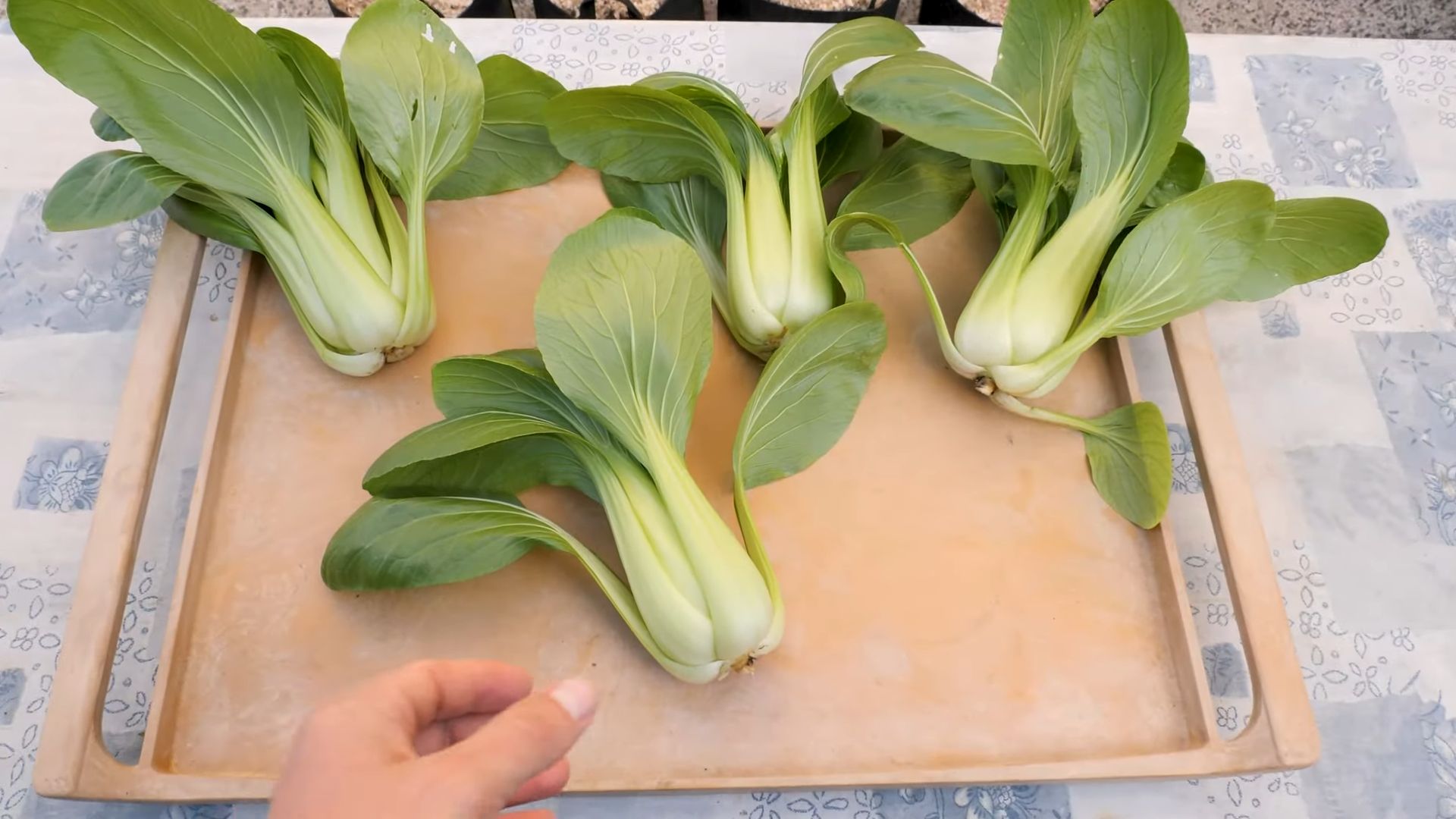
Growing Bok Choy: A Beginner’s Guide to Delicious Homegrown Greens
Okay, so you want to grow your own bok choy? Awesome! It’s surprisingly easy, even if you don’t have a huge garden. Bok choy, also known as pak choi, is a fantastic and versatile vegetable that’s packed with nutrients. Plus, nothing beats the taste of fresh, homegrown produce. I’m going to walk you through everything you need to know to successfully grow bok choy, whether you’re a seasoned gardener or just starting out.
Choosing Your Bok Choy Variety
First things first, let’s talk about varieties. There are a few different types of bok choy you can choose from, and they vary in size, shape, and color. Here are a few popular options:
* Shanghai Bok Choy: This variety has light green stems and spoon-shaped leaves. It’s known for its mild flavor and tender texture.
* Baby Bok Choy: As the name suggests, this is a smaller version of regular bok choy. It’s perfect for stir-fries and salads.
* Joi Choi: This variety is larger and more heat-tolerant than some other types. It has thick, white stems and dark green leaves.
* Purple Lady Bok Choy: If you want to add some color to your garden, this variety has beautiful purple leaves.
I personally love growing Shanghai bok choy because it’s so versatile, but feel free to experiment and find your favorite!
Preparing for Planting
Before you even think about planting, you need to get your ducks in a row. This means choosing the right location, preparing the soil, and gathering your supplies.
* Location, Location, Location: Bok choy needs at least 4-6 hours of sunlight per day. Morning sun is ideal, as it helps to dry the leaves and prevent fungal diseases. If you live in a hot climate, some afternoon shade can be beneficial.
* Soil Preparation is Key: Bok choy prefers well-drained, fertile soil with a pH between 6.0 and 7.5. Before planting, amend your soil with compost or other organic matter to improve drainage and fertility. I usually add a generous amount of compost to my garden beds before planting anything.
* Gather Your Supplies: You’ll need bok choy seeds (or seedlings, if you prefer), a trowel, a watering can or hose, and some fertilizer. I like to use a balanced organic fertilizer.
Planting Your Bok Choy
Now for the fun part! There are two main ways to plant bok choy: from seed or from seedlings. I usually start from seed because it’s more economical, but seedlings can give you a head start.
Planting from Seed
1. Timing is Everything: Bok choy is a cool-season crop, so it’s best to plant it in early spring or late summer/early fall. Avoid planting during the hottest months of the year, as the heat can cause the plants to bolt (go to seed). I usually aim to plant my spring crop about 4-6 weeks before the last expected frost. For a fall crop, plant about 6-8 weeks before the first expected frost.
2. Sowing the Seeds: Sow the seeds directly into the garden soil, about 1/4 to 1/2 inch deep and 1-2 inches apart. Gently cover the seeds with soil and water thoroughly.
3. Thinning the Seedlings: Once the seedlings emerge (usually within 5-7 days), thin them to about 6-8 inches apart. This will give the plants enough room to grow. Don’t just yank them out! Gently snip the unwanted seedlings at the soil line with scissors to avoid disturbing the roots of the remaining plants.
Planting Seedlings
1. Choose Healthy Seedlings: Select seedlings that are healthy and vigorous, with no signs of disease or pests.
2. Prepare the Planting Holes: Dig holes that are slightly larger than the root balls of the seedlings. Space the holes about 6-8 inches apart.
3. Plant the Seedlings: Gently remove the seedlings from their containers and loosen the roots slightly. Place the seedlings in the holes and backfill with soil. Water thoroughly.
Caring for Your Bok Choy
Once your bok choy is planted, it’s important to provide it with the care it needs to thrive. This includes watering, fertilizing, and protecting it from pests and diseases.
* Watering: Bok choy needs consistent moisture to grow well. Water regularly, especially during dry periods. Aim to keep the soil evenly moist, but not waterlogged. I usually water deeply once or twice a week, depending on the weather.
* Fertilizing: Fertilize your bok choy every 2-3 weeks with a balanced organic fertilizer. Follow the instructions on the fertilizer package. You can also side-dress the plants with compost or aged manure.
* Weeding: Keep the area around your bok choy free of weeds. Weeds compete with the plants for nutrients and water. Hand-pull weeds carefully to avoid disturbing the roots of the bok choy.
* Pest Control: Bok choy can be susceptible to a few pests, such as aphids, flea beetles, and cabbage worms. Inspect your plants regularly for signs of pests. If you find any, you can try using insecticidal soap or neem oil to control them. I prefer to use organic pest control methods whenever possible.
* Disease Prevention: Bok choy can also be affected by fungal diseases, such as downy mildew and powdery mildew. To prevent these diseases, make sure to provide good air circulation around the plants and avoid overhead watering. If you notice any signs of disease, remove the affected leaves immediately.
Harvesting Your Bok Choy
The best part of growing your own bok choy is, of course, harvesting it! You can harvest bok choy at any stage of growth, depending on your preference.
* When to Harvest: Baby bok choy can be harvested when the leaves are about 4-6 inches long. Mature bok choy can be harvested when the heads are about 12-18 inches tall.
* How to Harvest: To harvest bok choy, simply cut the entire head off at the base with a sharp knife. You can also harvest individual leaves as needed.
* Succession Planting: To ensure a continuous harvest, plant bok choy in succession every 2-3 weeks. This will give you a steady supply of fresh greens throughout the growing season.
Troubleshooting Common Problems
Even with the best care, you might encounter some problems when growing bok choy. Here are a few common issues and how to address them:
* Bolting: Bolting is when the plant prematurely goes to seed. This can happen if the weather is too hot or if the plant is stressed. To prevent bolting, plant bok choy during the cool season and provide it with consistent moisture.
* Yellowing Leaves: Yellowing leaves can be a sign of nutrient deficiency, overwatering, or disease. Check the soil pH and nutrient levels. Make sure the soil is well-drained and avoid overwatering.
* Pest Infestations: As mentioned earlier, bok choy can be susceptible to pests. Inspect your plants regularly and take action to control pests as soon as you notice them.
Enjoying Your Homegrown Bok Choy
Now that you’ve harvested your bok choy, it’s time to enjoy it! Bok choy is incredibly versatile and can be used in a variety of dishes.
Okay, so you want to grow your own bok choy? Awesome! It’s surprisingly easy, even if you don’t have a huge garden. Bok choy, also known as pak choi, is a fantastic and versatile vegetable that’s packed with nutrients. Plus, nothing beats the taste of fresh, homegrown produce. I’m going to walk you through everything you need to know to successfully grow bok choy, whether you’re a seasoned gardener or just starting out.
Choosing Your Bok Choy Variety
First things first, let’s talk about varieties. There are a few different types of bok choy you can choose from, and they vary in size, shape, and color. Here are a few popular options:
* Shanghai Bok Choy: This variety has light green stems and spoon-shaped leaves. It’s known for its mild flavor and tender texture.
* Baby Bok Choy: As the name suggests, this is a smaller version of regular bok choy. It’s perfect for stir-fries and salads.
* Joi Choi: This variety is larger and more heat-tolerant than some other types. It has thick, white stems and dark green leaves.
* Purple Lady Bok Choy: If you want to add some color to your garden, this variety has beautiful purple leaves.
I personally love growing Shanghai bok choy because it’s so versatile, but feel free to experiment and find your favorite!
Preparing for Planting
Before you even think about planting, you need to get your ducks in a row. This means choosing the right location, preparing the soil, and gathering your supplies.
* Location, Location, Location: Bok choy needs at least 4-6 hours of sunlight per day. Morning sun is ideal, as it helps to dry the leaves and prevent fungal diseases. If you live in a hot climate, some afternoon shade can be beneficial.
* Soil Preparation is Key: Bok choy prefers well-drained, fertile soil with a pH between 6.0 and 7.5. Before planting, amend your soil with compost or other organic matter to improve drainage and fertility. I usually add a generous amount of compost to my garden beds before planting anything.
* Gather Your Supplies: You’ll need bok choy seeds (or seedlings, if you prefer), a trowel, a watering can or hose, and some fertilizer. I like to use a balanced organic fertilizer.
Planting Your Bok Choy
Now for the fun part! There are two main ways to plant bok choy: from seed or from seedlings. I usually start from seed because it’s more economical, but seedlings can give you a head start.
Planting from Seed
1. Timing is Everything: Bok choy is a cool-season crop, so it’s best to plant it in early spring or late summer/early fall. Avoid planting during the hottest months of the year, as the heat can cause the plants to bolt (go to seed). I usually aim to plant my spring crop about 4-6 weeks before the last expected frost. For a fall crop, plant about 6-8 weeks before the first expected frost.
2. Sowing the Seeds: Sow the seeds directly into the garden soil, about 1/4 to 1/2 inch deep and 1-2 inches apart. Gently cover the seeds with soil and water thoroughly.
3. Thinning the Seedlings: Once the seedlings emerge (usually within 5-7 days), thin them to about 6-8 inches apart. This will give the plants enough room to grow. Don’t just yank them out! Gently snip the unwanted seedlings at the soil line with scissors to avoid disturbing the roots of the remaining plants.
Planting Seedlings
1. Choose Healthy Seedlings: Select seedlings that are healthy and vigorous, with no signs of disease or pests.
2. Prepare the Planting Holes: Dig holes that are slightly larger than the root balls of the seedlings. Space the holes about 6-8 inches apart.
3. Plant the Seedlings: Gently remove the seedlings from their containers and loosen the roots slightly. Place the seedlings in the holes and backfill with soil. Water thoroughly.
Caring for Your Bok Choy
Once your bok choy is planted, it’s important to provide it with the care it needs to thrive. This includes watering, fertilizing, and protecting it from pests and diseases.
* Watering: Bok choy needs consistent moisture to grow well. Water regularly, especially during dry periods. Aim to keep the soil evenly moist, but not waterlogged. I usually water deeply once or twice a week, depending on the weather.
* Fertilizing: Fertilize your bok choy every 2-3 weeks with a balanced organic fertilizer. Follow the instructions on the fertilizer package. You can also side-dress the plants with compost or aged manure.
* Weeding: Keep the area around your bok choy free of weeds. Weeds compete with the plants for nutrients and water. Hand-pull weeds carefully to avoid disturbing the roots of the bok choy.
* Pest Control: Bok choy can be susceptible to a few pests, such as aphids, flea beetles, and cabbage worms. Inspect your plants regularly for signs of pests. If you find any, you can try using insecticidal soap or neem oil to control them. I prefer to use organic pest control methods whenever possible.
* Disease Prevention: Bok choy can also be affected by fungal diseases, such as downy mildew and powdery mildew. To prevent these diseases, make sure to provide good air circulation around the plants and avoid overhead watering. If you notice any signs of disease, remove the affected leaves immediately.
Harvesting Your Bok Choy
The best part of growing your own bok choy is, of course, harvesting it! You can harvest bok choy at any stage of growth, depending on your preference.
* When to Harvest: Baby bok choy can be harvested when the leaves are about 4-6 inches long. Mature bok choy can be harvested when the heads are about 12-18 inches tall.
* How to Harvest: To harvest bok choy, simply cut the entire head off at the base with a sharp knife. You can also harvest individual leaves as needed.
* Succession Planting: To ensure a continuous harvest, plant bok choy in succession every 2-3 weeks. This will give you a steady supply of fresh greens throughout the growing season.
Troubleshooting Common Problems
Even with the best care, you might encounter some problems when growing bok choy. Here are a few common issues and how to address them:
* Bolting: Bolting is when the plant prematurely goes to seed. This can happen if the weather is too hot or if the plant is stressed. To prevent bolting, plant bok choy during the cool season and provide it with consistent moisture.
* Yellowing Leaves: Yellowing leaves can be a sign of nutrient deficiency, overwatering, or disease. Check the soil pH and nutrient levels. Make sure the soil is well-drained and avoid overwatering.
* Pest Infestations: As mentioned earlier, bok choy can be susceptible to pests. Inspect your plants regularly and take action to control pests as soon as you notice them.
Enjoying Your Homegrown Bok Choy
Now that you’ve harvested your bok choy, it’s time to enjoy it! Bok choy is incredibly versatile and can be used in a variety of dishes.
* Stir-fries: Bok choy is a classic ingredient in stir-fries. It adds a delicious crunch and mild flavor.
* Salads: Baby bok choy is great in salads. It’s tender and has a slightly sweet taste.
* Soups: Bok choy can be added to soups for extra flavor and nutrients.
* Steaming: Steamed bok choy is a simple and healthy side dish.
* Grilling: Grilled bok choy is a delicious and smoky treat.
I personally love adding bok choy to my stir-fries and soups. It’s such a healthy and flavorful addition to any meal.
Tips for Success
Here are a few extra tips to help you succeed in growing bok choy:
* Choose the Right Variety: Select a variety that is well-suited to your climate.
* Prepare the Soil Well: Bok choy needs well-drained, fertile soil.
* Water Regularly: Bok choy needs consistent moisture.
* Fertilize Regularly: Fertilize your bok choy every 2-3 weeks.
* Protect from Pests and Diseases: Inspect your plants regularly and take action to control pests and diseases.
* Harvest Regularly: Harvest bok choy when it’s young and tender.
Growing bok choy is a rewarding experience. With a little bit of care and attention, you can enjoy fresh
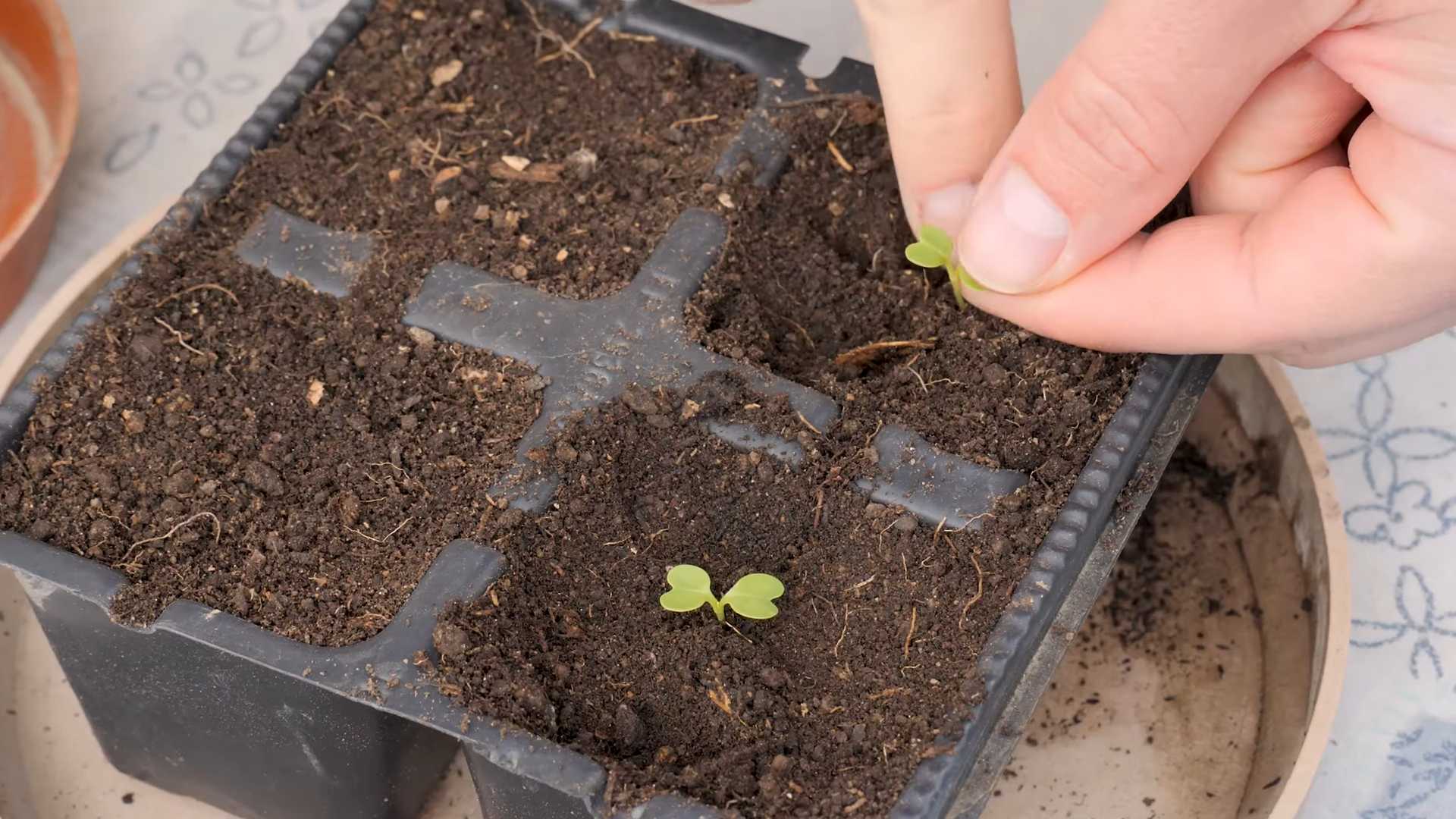
Conclusion
So, there you have it! Mastering the art of planting Bok Choy at home is not only achievable but also incredibly rewarding. We’ve walked you through the simple steps, highlighting the ease and cost-effectiveness of growing your own fresh, crisp Bok Choy. Forget those wilted, overpriced heads at the grocery store. Imagine stepping into your garden or onto your balcony and harvesting vibrant, healthy Bok Choy whenever you need it.
This DIY trick is a must-try for several compelling reasons. First, you gain complete control over the growing process, ensuring your Bok Choy is free from harmful pesticides and chemicals. You know exactly what goes into your food, promoting a healthier lifestyle for you and your family. Second, it’s a fantastic way to reduce your carbon footprint by minimizing transportation and packaging waste. You’re contributing to a more sustainable future, one Bok Choy plant at a time. Third, and perhaps most importantly, it’s incredibly satisfying! There’s a unique joy in nurturing a plant from seed to harvest, witnessing its growth, and then enjoying the fruits (or rather, vegetables) of your labor.
Why is this method superior? Because it empowers you to grow fresh, organic Bok Choy regardless of your space constraints. Whether you have a sprawling garden or a small apartment balcony, you can adapt this method to suit your needs.
Looking for variations? Consider these options to personalize your Bok Choy growing experience:
* **Succession Planting:** Plant new seeds every few weeks to ensure a continuous harvest throughout the growing season. This way, you’ll always have fresh Bok Choy on hand.
* **Container Gardening:** If you’re short on space, use containers of varying sizes. Dwarf varieties of Bok Choy are particularly well-suited for container gardening.
* **Companion Planting:** Plant Bok Choy alongside other vegetables like carrots, radishes, and onions to deter pests and improve growth.
* **Different Varieties:** Experiment with different varieties of Bok Choy, such as Shanghai Bok Choy (with its pale green stalks) or Mei Qing Choi (a smaller, more compact variety).
* Hydroponics: For the adventurous gardener, try growing Bok Choy hydroponically for faster growth and higher yields.
We’ve provided you with all the tools and knowledge you need to succeed. Now, it’s your turn to get your hands dirty and experience the joy of growing your own Bok Choy. Don’t be intimidated if you’re a beginner; this is a forgiving and rewarding plant to cultivate.
We are confident that you’ll find this DIY trick to be a game-changer in your kitchen and garden. So, grab your seeds, prepare your soil, and get ready to enjoy the freshest, most delicious Bok Choy you’ve ever tasted.
We encourage you to try this DIY trick and share your experience with us! Let us know how it goes, what challenges you faced, and what successes you celebrated. Share your photos and tips in the comments below. We can’t wait to hear your Bok Choy growing stories! Happy gardening!
Frequently Asked Questions (FAQ)
What is the best time of year to plant Bok Choy?
Bok Choy is a cool-season crop, meaning it thrives in cooler temperatures. The best time to plant Bok Choy is in early spring or late summer/early fall. Avoid planting during the hottest months of summer, as high temperatures can cause the plants to bolt (go to seed prematurely), resulting in bitter-tasting leaves. For a spring crop, start seeds indoors 4-6 weeks before the last expected frost. For a fall crop, sow seeds directly into the garden in late summer, about 6-8 weeks before the first expected frost.
How much sunlight does Bok Choy need?
Bok Choy prefers partial shade, especially during the hottest part of the day. While it can tolerate full sun, too much direct sunlight can scorch the leaves. Aim for at least 4-6 hours of sunlight per day, ideally in the morning or late afternoon. If you live in a particularly hot climate, providing some afternoon shade can help prevent bolting.
What kind of soil is best for growing Bok Choy?
Bok Choy prefers well-draining, fertile soil that is rich in organic matter. The ideal soil pH is between 6.0 and 7.5. Before planting, amend the soil with compost or well-rotted manure to improve drainage and fertility. You can also add a slow-release fertilizer to provide essential nutrients throughout the growing season. If you’re growing in containers, use a high-quality potting mix.
How often should I water Bok Choy?
Bok Choy needs consistent moisture to thrive. Water regularly, especially during dry periods, to keep the soil evenly moist but not waterlogged. Avoid overhead watering, as this can increase the risk of fungal diseases. Instead, water at the base of the plants. Mulching around the plants can help retain moisture and suppress weeds.
What are some common pests and diseases that affect Bok Choy?
Common pests that affect Bok Choy include aphids, cabbage worms, flea beetles, and slugs. To control these pests, you can use organic methods such as handpicking, insecticidal soap, or diatomaceous earth. Row covers can also help protect your plants from pests. Common diseases that affect Bok Choy include downy mildew, clubroot, and black rot. To prevent these diseases, ensure good air circulation, avoid overhead watering, and practice crop rotation. Choose disease-resistant varieties whenever possible.
How do I harvest Bok Choy?
You can harvest Bok Choy at any stage of growth, depending on your preference. For baby Bok Choy, harvest when the leaves are about 4-6 inches long. For mature Bok Choy, harvest when the heads are firm and compact. To harvest, cut the entire head at the base of the plant with a sharp knife. You can also harvest individual leaves as needed, starting with the outer leaves.
Can I grow Bok Choy in containers?
Yes, Bok Choy grows well in containers. Choose a container that is at least 6-8 inches deep and wide. Use a high-quality potting mix and ensure the container has good drainage. Dwarf varieties of Bok Choy are particularly well-suited for container gardening. Water regularly and fertilize every few weeks with a balanced fertilizer.
How do I prevent Bok Choy from bolting?
Bolting is when a plant prematurely flowers and goes to seed, often due to stress from heat or lack of water. To prevent Bok Choy from bolting, plant it at the right time of year (early spring or late summer/early fall), provide partial shade during the hottest part of the day, and water regularly to keep the soil evenly moist. Choose bolt-resistant varieties whenever possible.
Is Bok Choy nutritious?
Yes, Bok Choy is a highly nutritious vegetable. It is an excellent source of vitamins A, C, and K, as well as folate, calcium, and potassium. It is also low in calories and high in fiber. Eating Bok Choy can help boost your immune system, improve bone health, and promote healthy digestion.
How can I store Bok Choy after harvesting?
To store Bok Choy after harvesting, wrap it loosely in a damp paper towel and place it in a plastic bag in the refrigerator. It will typically last for about 3-5 days. Avoid washing the Bok Choy before storing it, as this can promote spoilage. Wash it just before you’re ready to use it.

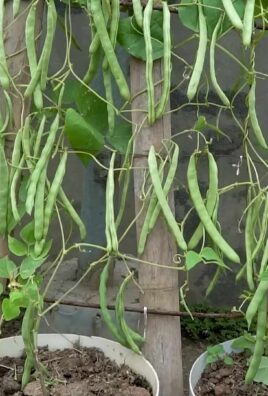
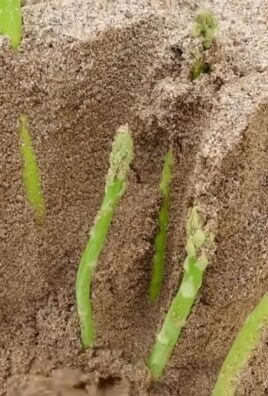
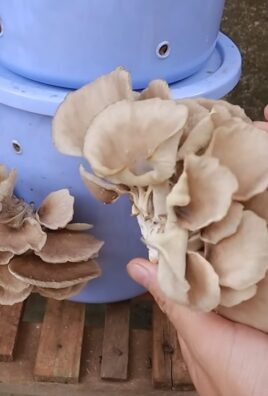
Leave a Comment